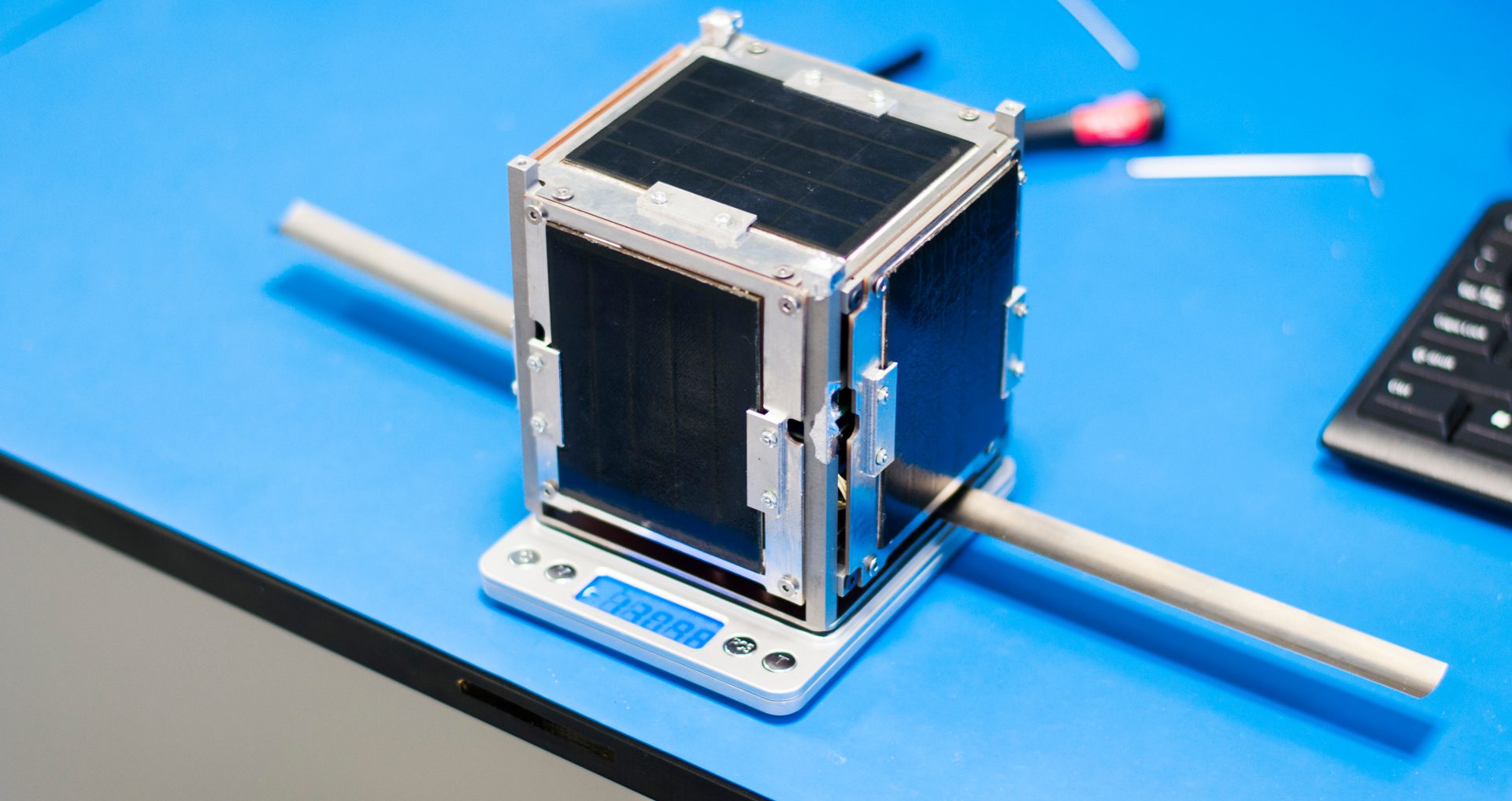KRAKsat is a CubeSat satellite in the 1U standard – a cube with dimensions of approximately 10x10x10cm and a weight slightly exceeding 1 kilogram. CubeSats are usually fired as extra rocket payloads or become part of a space ship delivering supplies to the ISS. KRAKsat satellite will be part of the supply that will be sent to the International Space Station in April 2019. After docking to the station, it will be released into space by the lock in the Kibō module.
Cubesat
KRAKsat section
Ferrofluid
Casing of experimental system
Printed Circuit Board

Data from the orbit
Flash memory
Power supply
Construction
In the upper part of the satellite there is an experimental setup. The first PCB under the chip is the main PCB built by our team. It is covered with aluminum sheet, on which solar panels are placed.
The bottom part of the structure consists of power and communication systems which SatRevolution helps us to prepare. The power system includes batteries that store energy and solar panels located on the outside. Everything is connected by the skeleton with aluminum rails.
Materials
All the materials used to build the satellite are approved for exert in the space industry. We carry out tests to ensure that individual components withstand overloads associated with launching the rocket and unfavorable conditions in space.
Our experiment, a ferrofluid flywheel, requires that the elements used for its construction have no magnetic properties. The only exception are electromagnets around the system.

